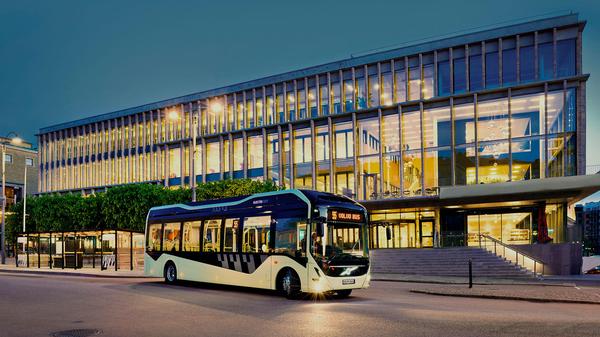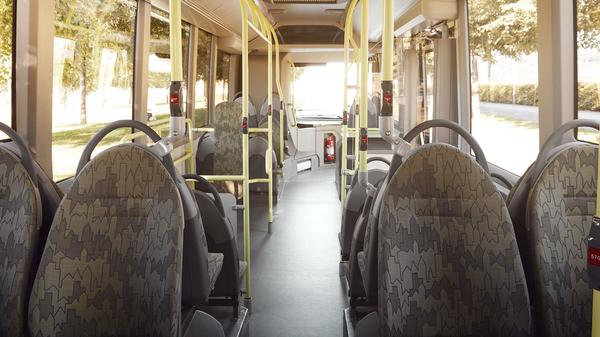Best Of
5 Best buses
Buses aren’t just for getting a group of people from A to B. If you’re looking for an exciting new project, or maybe some extra income, converting a bus could be for you.


Words by: Lex Kristan
Last updated on 27 October 2022 | 0 min read
According to the latest government data, there are around 32,000 buses in service on UK roads transporting more than 3 million people every day. Buses aren't just to get us from A to B, they contribute to urban sustainability, lower our carbon footprint and provide a vital link to rural communities.
Bus conversions have also risen in popularity over the years, with content creators across Instagram and TikTok showing off the fruits of their labour and reaping the rewards of a chilled-out life on the road. Despite this, most of us never give buses a second thought, but there are actually some important innovations happening in the bus market right now. The latest buses use a range of technologies such as hybrid, hydrogen and full-electric power to help lower emissions. So here’s a quick look at the five best buses currently operating on UK roads.
Bus conversions have also risen in popularity over the years, with content creators across Instagram and TikTok showing off the fruits of their labour and reaping the rewards of a chilled-out life on the road. Despite this, most of us never give buses a second thought, but there are actually some important innovations happening in the bus market right now. The latest buses use a range of technologies such as hybrid, hydrogen and full-electric power to help lower emissions. So here’s a quick look at the five best buses currently operating on UK roads.
Can I buy a bus?
First things first: To buy and drive a bus, you’ll need to be at least 18.
If you’re under 24 and hold a full driver’s license, you may be able to drive a bus as long as you hold a professional driving qualification called the Driver Certificate of Professional Competence (CPC). If you’re over 24 and hold a full driver’s license, you’ll need to apply for provisional bus entitlement (category D), before taking a category D test. You can learn more about the necessary requirements and exemptions on the gov.uk website here.
If you’re under 24 and hold a full driver’s license, you may be able to drive a bus as long as you hold a professional driving qualification called the Driver Certificate of Professional Competence (CPC). If you’re over 24 and hold a full driver’s license, you’ll need to apply for provisional bus entitlement (category D), before taking a category D test. You can learn more about the necessary requirements and exemptions on the gov.uk website here.
Can I live in a bus conversion in the UK?
In short – Yes, as long as the vehicle is roadworthy, holds a current MOT certificate and is taxed and insured. If you intend on parking the bus on private property and living in it full-time, you may need planning permission from your local council.
You shouldn’t need planning permission to live in a bus in the UK if you meet all of the following criteria: • The converted bus is strictly only used as an annexe to your primary residence. For example, it could be used as an additional bedroom. • You don’t rent out the converted bus, use it as business premises, or use it as a separate dwelling. • You are not blocking any entrances, exits, roads or footways, especially at a corner, bend, or junction. • You are not building new access to a classified road. • You check with your local council that there’s no need for planning permission, especially within urban housing estates. If you do not meet all the above criteria, you may need planning permission to put a converted bus on your property and live in it. As always, if in doubt consult the official government website or Citizen’s Advice.
You shouldn’t need planning permission to live in a bus in the UK if you meet all of the following criteria: • The converted bus is strictly only used as an annexe to your primary residence. For example, it could be used as an additional bedroom. • You don’t rent out the converted bus, use it as business premises, or use it as a separate dwelling. • You are not blocking any entrances, exits, roads or footways, especially at a corner, bend, or junction. • You are not building new access to a classified road. • You check with your local council that there’s no need for planning permission, especially within urban housing estates. If you do not meet all the above criteria, you may need planning permission to put a converted bus on your property and live in it. As always, if in doubt consult the official government website or Citizen’s Advice.
1. ADL Enviro 400 MMC
Launched in 2018, the Enviro 400 MMC is one of the most popular double-decker buses in the UK and for good reason. This innovative bus can be powered by a range of reduced and zero-emission technologies including conventional diesel, SmartHybrid, Biogas, full hybrid, electric hybrid and full electric.
This choice of drivetrains makes the Enviro 400 MMC suitable for a wide range of uses including school transport, long-distance commuter routes and interurban travel. Because of this, the interior can be specified to meet the needs of the operator with options including long-distance coach style seats, glazed roof panels, air conditioning and more.
This choice of drivetrains makes the Enviro 400 MMC suitable for a wide range of uses including school transport, long-distance commuter routes and interurban travel. Because of this, the interior can be specified to meet the needs of the operator with options including long-distance coach style seats, glazed roof panels, air conditioning and more.


2. Yutong E series
The Yutong E series is fast becoming a common sight on UK roads. Launched in the UK market in 2019, the bus is available in 10.8m and 12m lengths and is powered by a fully electric drivetrain. This compact single-decker midi-bus comes with a 422kWh battery as standard which offers a daily range of nearly 300kms from a single charge.
The compact size of the bus combined with its excellent turning circle means this bus is perfectly adapted to the UK market. The driver and passengers will also love travelling on the vehicle thanks to its powerful dual-zone air-conditioning, LED lighting and USB charge points which are all provided as standard.
The compact size of the bus combined with its excellent turning circle means this bus is perfectly adapted to the UK market. The driver and passengers will also love travelling on the vehicle thanks to its powerful dual-zone air-conditioning, LED lighting and USB charge points which are all provided as standard.
3. Volvo 7900 Electric
The Volvo 7900 Electric was one of the UK's first full-electric buses to be put on regular service. This smart-looking midi bus is designed explicitly for interurban routes and offers an ultra-efficient opportunity charging system which allows operators to charge the bus at conventional bus stops using the roof-mounted pantograph system.
From a passenger perspective, the Volvo 7900 scores with a large open passenger deck free from obstructions. Air conditioning is also supplied as standard and a range of seating options is available depending on the type of operation required. And being a fully electric bus, the drivetrain is ultra-smooth and completely silent.
From a passenger perspective, the Volvo 7900 scores with a large open passenger deck free from obstructions. Air conditioning is also supplied as standard and a range of seating options is available depending on the type of operation required. And being a fully electric bus, the drivetrain is ultra-smooth and completely silent.
4. Wrightbus Streetdeck FCEV
From the outside, this FCEV uses the familiar Wrightbus Streetdeck design, which is a famous sight in towns and cities across the UK. Underneath, however, this bus is powered using clean-air hydrogen fuel cell technology. This provides increased range over a fully electric vehicle without releasing any carbon emissions.
Wrightbus claims the bus has a range of 300 miles which makes it comparable to a vehicle powered by a conventional diesel engine. That makes this bus suitable for most intercity long-distance routes which are out of the question for most electric-powered buses. The bus is filled with hydrogen daily in the same way as a conventional bus. The hydrogen is manufactured off-site and delivered to the depot for storage. This means the operator has to make a considerable investment in infrastructure before the bus can be put into service. But the investment required should be less than that needed to operate a fleet of electric buses.
Wrightbus claims the bus has a range of 300 miles which makes it comparable to a vehicle powered by a conventional diesel engine. That makes this bus suitable for most intercity long-distance routes which are out of the question for most electric-powered buses. The bus is filled with hydrogen daily in the same way as a conventional bus. The hydrogen is manufactured off-site and delivered to the depot for storage. This means the operator has to make a considerable investment in infrastructure before the bus can be put into service. But the investment required should be less than that needed to operate a fleet of electric buses.
5. Irizar ie Bus
The award-winning Irizar ie bus is a next-generation electric bus launched at Busworld 2019. The bus uses innovative powertrain technology which includes more efficient batteries than previous generation electric buses. These are combined with regenerative braking technologies to further optimise range.
The new batteries also allow slow charging much more quickly than older batteries. As a result, the vehicle can be charged using a conventional slow charger in just 3 hours. This eliminates the need for a pantograph charger for most interurban routes. Although a pantograph is available as an option. The Irizar ie is available in 10, 12, 15 and 18m lengths which makes it suitable for use on interurban routes. From a passenger perspective, the interior is also spacious and being an electric bus, is completely silent in operation. No wonder this bus can already be found in cities across Europe including London, Madrid, Marseille and Luxembourg.
The new batteries also allow slow charging much more quickly than older batteries. As a result, the vehicle can be charged using a conventional slow charger in just 3 hours. This eliminates the need for a pantograph charger for most interurban routes. Although a pantograph is available as an option. The Irizar ie is available in 10, 12, 15 and 18m lengths which makes it suitable for use on interurban routes. From a passenger perspective, the interior is also spacious and being an electric bus, is completely silent in operation. No wonder this bus can already be found in cities across Europe including London, Madrid, Marseille and Luxembourg.